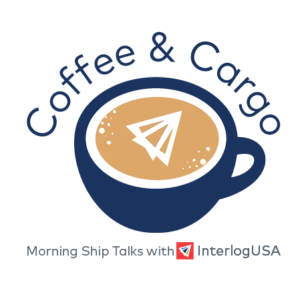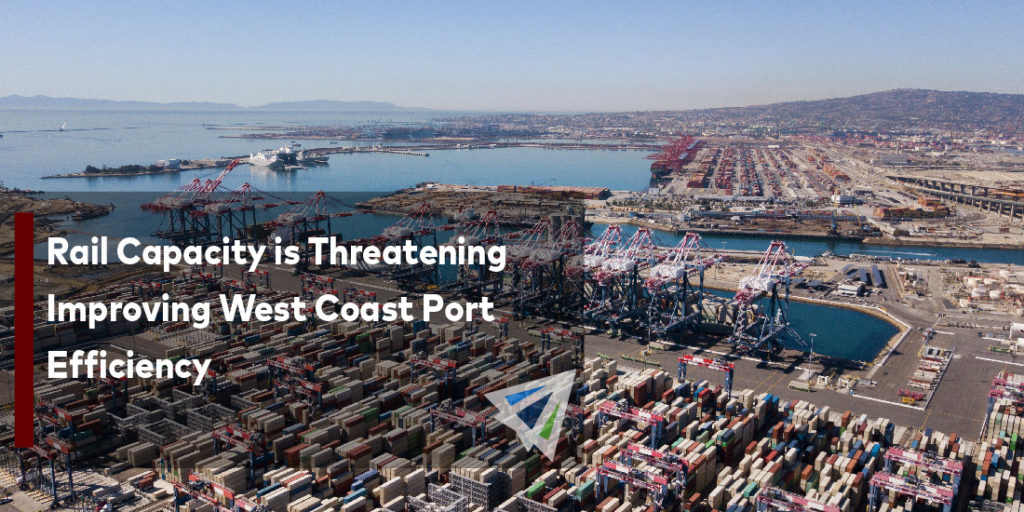Competitive Edge
June 1st, 2022
Stay Current with Interlog’s Weekly Newsletter:
Headlines
- The ports of Vancouver and Prince Rupert, already at capacity with Asian imports destined for US and Canadian markets, say they will be in no position to handle any cargo diverted from the US West Coast in the event of disruptions linked to ongoing longshore contract negotiations, according to the Journal of Commerce.
- The White House and the U.S. Department of Transportation on Friday appointed Stephen Lyons to replace John Porcari as the port and supply chain envoy for the Biden administration’s Supply Chain Disruptions Task Force, Freight Waves reports.
UPDATE: U.S./Canada Ports – Number of Vessels at Anchor as of 05/31/22
- Vancouver: 25 Vessels at Anchor (+2)
- Savannah: 20 Vessels at Anchor (+7)
- New York/Newark: 18 Vessels at Anchor (+4)
- Houston: 13 Vessels at Anchor (-1)
- Los Angeles/Long Beach: 12 Vessels at Anchor (+8)
- San Francisco/Oakland: 10 Vessels at Anchor (+4)
- Charleston: 2 Vessels at Anchor (-3)
Note: This does not include vessels moored and being unloaded at port docks.
Courtesy: MarineTraffic
IMPORT: Asia to North America (TPEB)
Recent Developments:
- Courtesy of Triple Eagle (Group) LTD, Tianjin is the latest Chinese city to be put under Covid-related lockdowns. This has led to many cancelled bookings, delays, and blank sailings for its port.
- The port and factories in the surrounding area remain fully operational, but increased measures could possibly change that.
- Lockdown measures imposed in Shanghai and the subsequent impacts of them remain in play. Restrictions continue to be imposed for manufacturing within the region.
- However, according to the Triple Eagle (Group) LTD, local officials of Shanghai are eyeing to fully reopen the city sometime in June. For more information, refer below in our newsletter.
- Demand remains softened in large part due to China’s ongoing Covid situation.
- Demand is expected by many to plume back to elevated levels once the overall situation eases in China.
- Uncertainty on a timeframe of when a new contract between the International Longshore and Warehouse Union (ILWU) and Pacific Maritime Association (PMA) will be agreed on has to led to shippers flocking to the USEC.
Rates: Rates remain relatively elevated compared to pre-pandemic levels, with exceptions to USWC-bound sailings (which have seen some alleviation in rates). Some transpacific carriers have announced GRIs for June to all Canadian and U.S. destinations from Asian and Indian Sub-Continent origins.
Space: Space has opened up in result of China’s Covid-related restrictions, particularly FAK (Freight-of-all-kinds) space on services calling from Shanghai. However, for temperature-controlled and hazardous cargo, space is critical.
Capacity: Capacity has also seen some softening due to China’s Covid-related restrictions. However, as more shippers shift to the USEC, capacity has also tightened in pockets.
Equipment: Intermodal systems are still stressed with truck and chassis availability remaining dire.
TIPS: Book at least 3 weeks prior to CRD. Strongly consider premium service and alternative routings. Additionally, be in contact with suppliers to check up on any Covid-related developments that can affect production.
IMPORT: Europe to North America (TAWB)
Recent Developments:
- USWC ports remain congested. However, wait times for vessels have vastly improved. In some cases, wait times have cut down to even 10 days at Los Angeles/Long Beach ports.
- On the USEC, the ports of Savannah and New York/Newark are both experiencing considerable congestion.
- Conversely, the Port of Charleston has sustained improvements to its operations and has enjoyed significantly decreased congestion. As of today, only two vessels are at anchor offshore.
Rates: Rates are expected to stay elevated throughout June.
Space: Space remains critical for USEC and USWC.
Capacity: Capacity for both North Europe and Mediterranean services remain gripped as a continuing result of high demand. Port congestion at USWC and USEC ports, while improved, also remain a contributor in capacity issues.
Equipment: Equipment remains available at European seaports. However, inland terminals in Europe are still reporting equipment shortages.
TIPS: Book 5 or more weeks prior to CRD. Shippers are strongly advised to use premium service for no-roll options and improved reliability for their cargo.
EXPORT: North America to Asia
Recent Developments:
- Congestion remains considerable at some USEC ports—notably, New York/Newark and Savannah.
- Diminishing schedule integrity is contributing to void sailings, delays, vessel cut-offs at ports, and challenging post earliest return dates.
- Vessel arrivals remain smooth for USWC POLs.
Rates: GRI activity (limited) announced for June.
Capacity: Available capacity remains fluid for USWC POLs.
Equipment: Truck and chassis availability remain causes for concern and has significantly contributed to congestion of the intermodal system.
TIPS: Book 4 to 6 weeks prior to ETD to secure equipment and vessel space.
Did You Know: Ningbo Lockdown Update
Ports and Terminals: assume normal operations
Trucking: the Zhejiang province continues to face interruptions, while trucking deliveries and pick-ups are required to be confirmed according to factory addresses. Additionally, all trucks have to wait a certain amount of time until their cargo is unloaded.
Warehouses: remain overflood with cargo, in part to Shanghai’s lockdown
Source: Triple Eagle Group
Freight News
Congestion in parts of Northern Europe continue to get worse, even as volumes are easing
While volumes have eased slightly in Northern Europe, congestion continues to remain ‘critical’ at key hub ports in the region as full container yards and labor shortages have hampered operations throughout terminals, warehouses, and trucking services which is causing lengthening ship delays – the Journal of Commerce reports.
Critical yard density levels are seen at the NTB terminal in Bremerhaven, Germany, as a result of continuous operational disruptions impacting global supply chains. Terminal operations have slowed down and vessel schedules will be further disrupted – affecting customers cargo, Neutral Consolidation Services notes.
In an effort to ease congestion, a spokesman with Hapag-Lloyd told the JOC, they are “diverting sailings on a regular basis to perform double calls, discharging in other less congested ports nearby and loading the exports in a congested port,” in hopes to improve yard density and allow them to deliver cargoes faster as they avoid waiting times outside.
Class I railroads detail congestion & chassis issues
Last Thursday, BNSF Railway told the Journal of Commerce that because of a shortage of chassis that’s forcing drivers to wait hours to get a load, BNSF is struggling to move containers in three U.S. inland markets; Chicago, Memphis, and Kansas City. Specifically, Logistics Park Chicago terminal has been congested for several months, as BNSF in the last 4 weeks has started to ground containers in Memphis and Kansas City – a sign, the JOC points out, that normal operations have been disrupted.
Solutions BNSF are taking: pop-up yards, something they did not have available last year, that they are now using to try to solve the issue at hand. Specifically, they are using three spillover locations to store ocean containers in the Chicago area (Lot W in LPC, Lot 17 in Elwood, and an ITS Conglobal depot in Joliet. BNSF has also increased their hiring for crane operators, side loaders, and yard hostlers.
Union Pacific is also feeling the heat of chassis issues, warning of a possible marine chassis shortage that could force them to stack containers near one port and four inland hubs, the JOC reports. With many experts predicting an early peak season this year, that puts additional pressure on the rail network. Union Pacific has reported optimistic truck turn times in their Global IV terminal in Joliet, Illinois to be eight minutes faster last month compared to the same time last year, the JOC noted.
Sign up for this month's webinar:

Sign up below to secure your spot for our June webinar on Wednesday, June 15th at 10am CST!
Sign up for our
industry answers
Our team works to provide valuable, unique, and relevant content to assist you in finding solutions. Sign up now.
